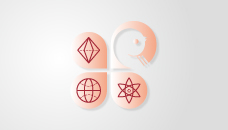Wei Jifeng, Hu Xiaoyang, Zhang Kai, Sun Liqun. Technologies and development trends of directly measuring high energy laser energy[J]. Infrared and Laser Engineering, 2017, 46(7): 706004
Search by keywords or author
- Infrared and Laser Engineering
- Vol. 46, Issue 7, 706004 (2017)
Abstract

Set citation alerts for the article
Please enter your email address



